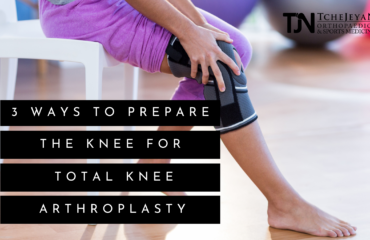Minimally invasive surgery (MIS) is a popular treatment for many knee injuries and conditions. MIS is sometimes called laparoscopy when the surgical procedure occurs in a body cavity and arthroscopy when the surgical procedure is for a joint. MIS is different from traditional surgery. In conventional surgery, the body is opened with a large incision so the surgeon can see and access the surgical site directly. In MIS, surgeons use a few minor “keyhole” incisions through which they insert a camera and surgical instruments. This enables the surgeon to see what is happening with a camera that lights and magnifies the interior. The surgeon then inserts special surgical instruments through the other incisions and manipulates the instruments to perform the surgery. Because MIS has several benefits over traditional surgery, it is used when it will yield better or similar results as traditional surgery.
1. Reduced Recovery Time
MIS can drastically reduce the recovery time after a knee injury surgery, even for major procedures such as ACL reconstruction. A person who has undergone minimally invasive ACL surgery can typically expect to have most of their swelling subside within a few days and can return to strenuous physical work within six months. This contrasts sharply with traditional ACL surgery, where it can take a patient up to 12 months to heal.
2. Less Scarring and Bleeding
Knee injuries can be debilitating and restrictive, so resolving your knee problem is crucial to your quality of life. In traditional knee surgery, a large incision must be made to reach the joint. Muscles and other tissues may have to be moved aside so that the surgeon can access the joint and the parts of the joint that require treatment. This can damage or traumatize the other parts of the knee. Using MIS techniques, the surrounding tissues do not suffer as much, and the incisions through the skin are much smaller, leading to less scarring and less bleeding during the surgery.
3. Minimal Discomfort After Surgery
Patients will experience some initial pain throughout their recovery period after any surgery. But because there is less trauma to all the tissues in the knee with MIS, the overall discomfort level after MIS is much lower than with traditional surgery. Post-surgery pain will subside relatively quickly with the help of acetaminophen or narcotic pain relievers. These medications are generally used post-surgery to help ease joint and muscle stiffness, swelling, and other related discomforts of knee surgery. With MIS, your reliance on these pain relievers will only last a short while.
4. Less Stress on the Immune System
The immune system is the body’s defense against disease, infection, trauma, and other external threats. When major surgery is performed, an intricate series of biological processes are initiated by your body to help it recover. This process involves producing more red blood cells to replenish lost hemoglobin, platelets to assist with clotting, and proteins to ensure the normal functionality of muscles and tissues. With a minimally invasive approach, the extent of tissue destruction is greatly limited due to smaller incisions and less need to disturb the muscle and other tissues near the surgical site. This reduced trauma means your body is not working as hard to help you recover. This also means that your immune system can function better overall.
5. Reduced Risk of Infection
When bacteria come into contact with an incision site, they can adhere to the epithelial cells that line the wound. This allows the microbes to colonize the surgical area, which causes infection. Because the incisions are so small with MIS and because the tissues within your knee are exposed, MIS procedures reduce the risk of infection.
At Tchejeyan Orthopaedics and Sports Medicine, we offer minimally invasive surgical procedures for many joint problems, including a torn ACL or PCL, a torn meniscus, cartilage repair, and a dislocated patella. If you have a knee injury or suffer from arthritis, the “L.A. Knee Guy” can help. Contact Tchejeyan Orthopaedics and Sports Medicine in Thousand Oaks, California, to learn how we can help you get back on your feet after an injury.




